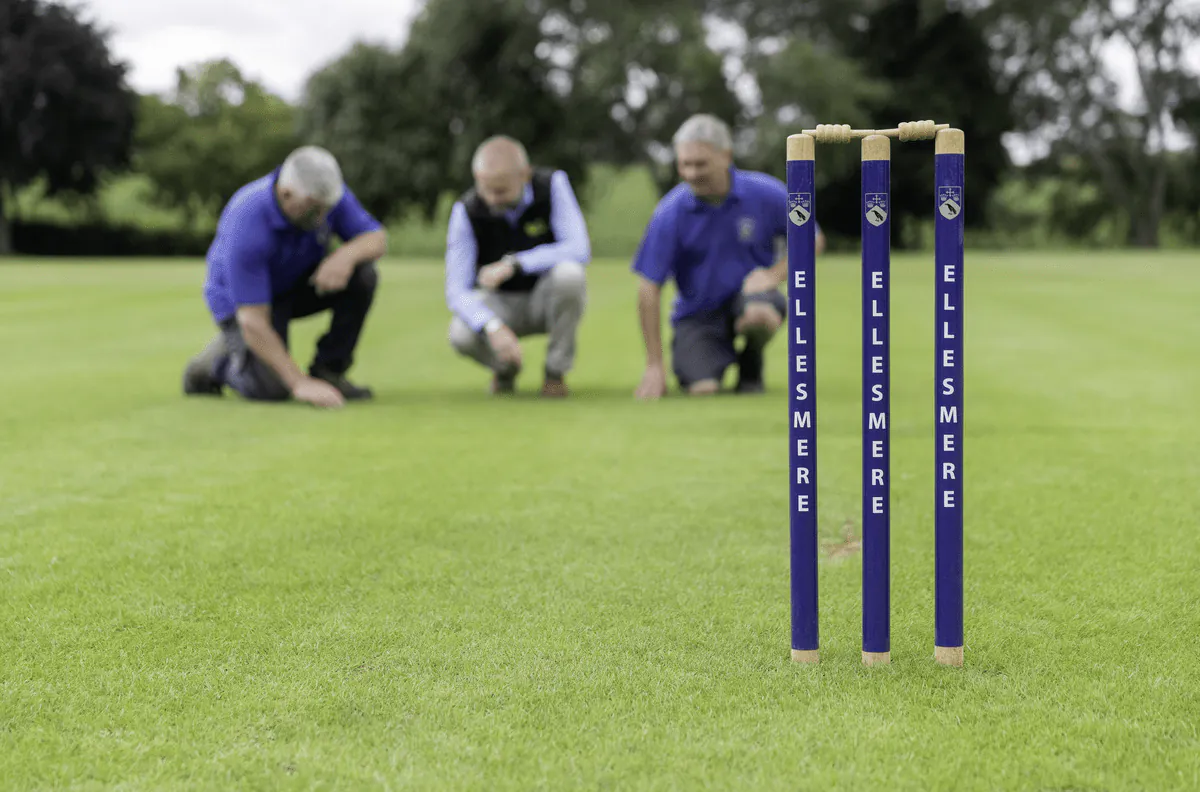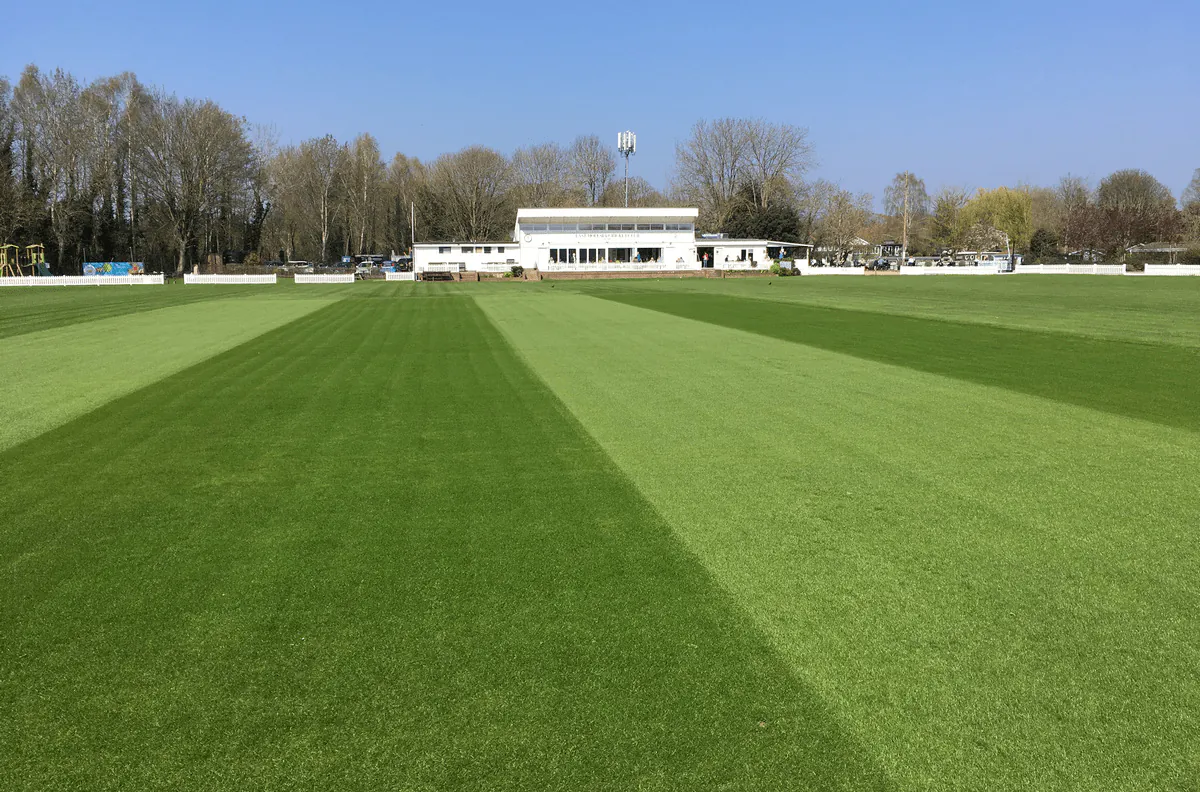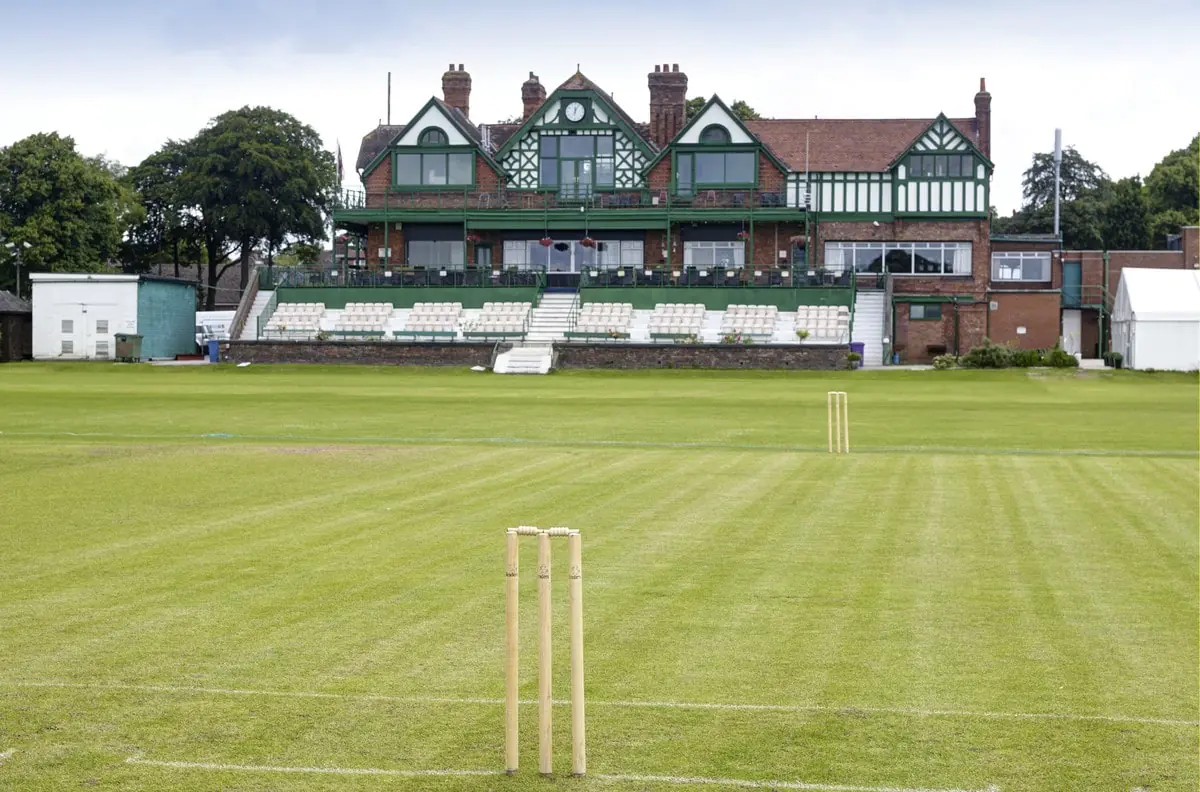Cricket pitch maintenance
Cricket is played on a surface that is possibly one of the most difficult to maintain. The grasses are subjected to extremes of maintenance regarding mowing and rolling, both of which greatly reduce the competitive ability of the plants to survive let alone thrive.

Spring cricket pitch renovation
Cricket square maintenance
At the start of the spring season, the cricket square benefits from a thorough brushing to remove any debris, followed by a light rolling with a 250 kg hand roller to resettle any upheaval caused by frost. If there is any dead leaf debris present at the base of the grass sward, then this should be removed by scarifying.
The square should then be topped with a mower set at 13 mm. On subsequent cuts, the height can gradually be reduced to a desired 6.5 mm. Any thin areas should be overseeded and minor depressions should be top dressed with dry loam to maintain levels.
There are many different theories regarding the extent of rolling on a cricket square. But a flat roller weighing approximately 1,000 kg should be used on the square from March onwards when there is a reasonable amount of moisture in the soil. The soil needs to be firm and consolidated using the minimum amount of rolling as over-compaction will mean a complete lack of drainage and loss of grass vigour.
In-season cricket pitch maintenance
Cricket wicket maintenance
When repairing a wicket after a match, it is important to produce a soil tilth by using a brush or wire rake to remove all loam that isn’t bound with grassroots. This will mainly be the wicket ends.
After seeding, a thin top dressing of loam can be applied to ensure that the seed is properly covered. It is worth remembering that the amount of progressive renovation work carried out during the summer months will greatly reduce the need for end-of-season cricket pitch maintenance.
During prolonged summer weather, a damp sack can be used to cover the surface until the seedlings appear, or in cooler times, a growth sheet. The young seedlings should be kept moist until the roots have taken a firm hold.
Cricket pitch preparation and maintenance
A week before the wicket is required for play, it should be heavily scarified to remove any lanky soft growth and to generally thin out the grass sward. The scarification process aims to reduce the density of the sward until the soil can be seen between the individual blades of grass. The wicket grass should then be mown as closely as possible to create a level surface.
The wicket grass should be rolled to consolidate the surface. Ideally, the pitch should be cut every day or at least every other day for the following week and brushed and rolled two or three times depending on the amount of consolidation required.
On the morning of the match, the wicket should be given a light rolling to ensure a polished finish and the creases marked out with clear white lines. Individual variations between cricket grounds do exist making the experienced groundsman an indispensable ingredient in good preparation.
Autumn cricket pitch renovation
At the end of the summer season, reinstatement work should commence, beginning with thorough scarification of the whole square to remove all fibrous growth that has built up during the summer months. Alternatively, create a seedbed if a tractor-mounted seeder is not an option.
The square should then be thoroughly spiked to a depth of at least 100 mm to relieve the compaction and so help the existing roots to regenerate. At lower levels, spiking every three to four years will be sufficient.
If the square isn’t renovated with fresh seed and loam added, then the older grasses will struggle to recover and the bare areas will be colonised by undesirable annual meadow grass.
During winter, the grass shoots should be given every encouragement to develop as they will be largely responsible for binding the wicket together during the following season. Nutrition is key here in the cricket pitch maintenance process, so add some nitrogen (see below).
Adding new loam gives the surface more strength which gives more bounce during the season and aids in amending levels. The new seedlings will establish to bind this new loam together creating a stronger surface.
A5 Cricket pitch grass seed mix

Using these modern perennial ryegrasses gives the benefit of increased wear tolerance and improved root penetration. It is important to choose a mixture of modern, ultra-fine, clean-cutting varieties such as Cabrio or Escapade. In fact, our A5 cricket pitch grass seed mixture contains both varieties.
If poor quality cultivars are used, they tend to have the disadvantage of ‘crowning,’ resulting in an uneven surface. The rapid recovery and germination of ryegrass will give you the chance to reuse a wicket much quicker than other species.
Many amateur cricket grounds are maintained by well-meaning volunteers who, unfortunately, cannot give the required time for a full cricket pitch maintenance programme. However, attention to detail will always pay good dividends, particularly on a cricket square.
Cricket pitch fertiliser recommendations for wickets
Guidelines for cricket pitch fertiliser inputs on a wicket per hectare per annum:
- Nitrogen 80-120 kg
- Phosphorus 20-40 kg
- Potassium 40-100 kg
There is much debate over whether to fertilise a square during the playing season. While beneficial for the plant, nitrogen can cause excess softer growth when we want the plant dry and stressed for maximum cricket performance.
If the budget only allows for single fertilisation, a controlled release product such as GSR Tri-Phase should be applied at the time of autumn renovation. This will encourage growth and recovery to existing grass coverage, act as a pre-seed fertiliser for any overseeding works, and encourage growth through the close season
If there is a budget for two feeds, March would be a great time to apply Novatec Premium (15-3-20 plus TE). This will slowly release nutrients throughout spring.
| Month | Product | Usage rate |
| April/May | GSR Tri-Phase | 35 g/m2 |
| August | Novatec Premium | 35 g/m2 |
For greater detail on the nutrient requirements of your cricket pitch grass, please contact your area sales representative who can tailor a bespoke fertiliser plan to suit the specific requirements of your pitch. Find your local sales representative – click here.

Cricket outfield maintenance
At the start of the summer season in your cricket pitch maintenance calendar, the outfield needs a thorough harrowing to clean out the dead growth. This is followed by a light rolling to leave a relatively flat, smooth surface. A good slow-release fertiliser such as GSR Tri-Phase should also be applied at the start of the season at 35 g/m2.
If weeds are a problem in the outfield, a weedkiller should be applied when the fertiliser has taken effect and the growth is vigorous. For new outfields, cricket pitch grass seed mixtures using species such as Creeping red fescues, turf-type Perennial ryegrasses, Smooth stalked meadow grasses and Bentgrasses should be used. This provides a uniform, wear-tolerant sward within a relatively short establishment time.
A9 Outfield cricket grass seed mixture
A9 combines Perennial ryegrass varieties with Creeping red fescue and Smooth-stalked meadow grass to provide a cricket outfield grass seed mixture that’s quick to establish and develops a resilient sward.
Cricket pitch maintenance advice
You can discuss your cricket pitch maintenance strategy if needed with our sports grass experts. Contact us now with any questions.


